Department of Neurosurgery Xuanwu Hospital August 16, 2024 18:03 Beijing




-- Department News --
Volunteer with love
light up hope
Lingfeng Foundation and Xuanwu Neurosurgery team of Hospital Department
treat a child with severe myelomeningoeele



“We've long since become accustomed to days without hope...” These were the words of Yang Yang's (pseudonym) mother as she accompanied her to the Department of Neurosurgery at Xuanwu Hospital.
A child's illness takes away a family's hope
The day when Yang Yang was admitted to the hospital was her 10th birthday. Children at this age should be enjoying the happiness of growing up, but Yangyang and her parents were facing a major choice that might change the entire trajectory of their lives – to surgically remove a huge mass that was wrapping around the spinal cord and nerves at the back of her neck. In medical terms, it is called “myelomeningocele”.
Yang Yang is the second child in her family. When she was born, a lump was found on the back of her neck, and there was a bony defect from the fifth cervical vertebra to the second thoracic vertebra. It was diagnosed as “spina bifida combined with meningomyelocele (severe)”. However, her parents, a simple couple living in Gulin County, Sichuan Province, did not have access to adequate medical resources to treat their child at birth, and could only return home first, hoping that things would get better. However, they underestimated the difficulties caused by this congenital developmental disorder.
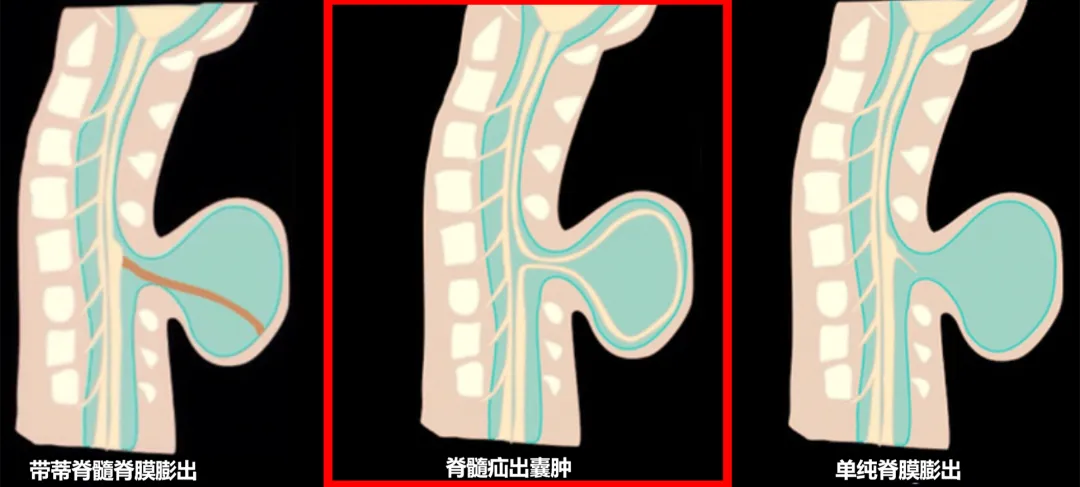
The common manifestations of myelomeningocele,and Yang Yang belongs to the second type
(Image source: Pediatr Radiol. 2016 Sep;46(10):1471-81)
Myelomeningocele is a congenital disease and a severe type of spina bifida. It occurs during early embryonic development and is mostly caused by malnutrition (especially folic acid deficiency) during pregnancy. During the process of spinal cord closure, there is an obstacle, causing the meninges (a protective membrane surrounding the spinal cord) to protrude outside through an unclosed bony tube. In severe cases, even nerves are pulled outside the vertebral canal along with the protruding sac, affecting important functions such as limb movement, sensation, and urination. Unfortunately, Yang Yang's case was a severe one.
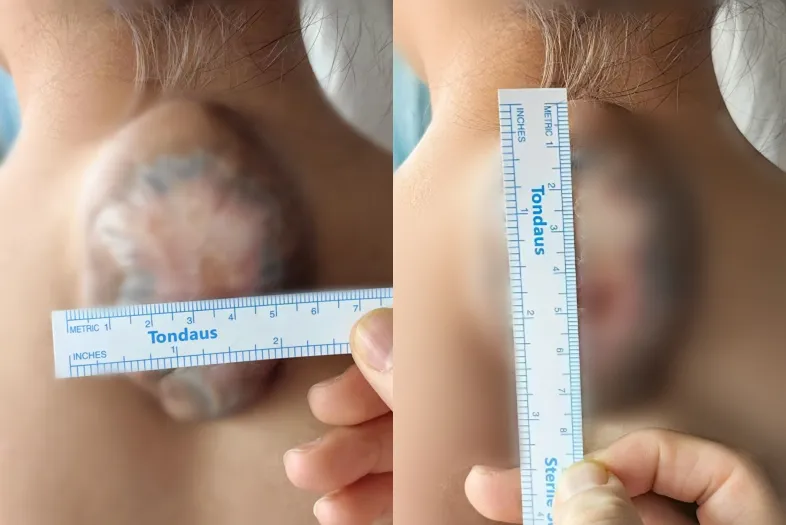
The bulging mass on Yang Yang's back was wrapped around the spinal nerves, pus was oozing from the surface of the skin, and the epidermis had already begun to die off.
As Yang Yang grew older, the bulging spinal membrane did not improve as hoped, and it even grew larger. Slow development, unsteady walking, and pus oozing from the skin of the mass were gradually observed. However, all the parents could do was to take care of her as best as they could. Her parents had also taken Yang Yang to a major hospital for treatment, but they were scared off by the news that the treatment would cost hundreds of thousands of yuan and that Yang Yang would become paralyzed or a vegetable after the operation. Such a high cost would only add to the burden of this struggling family. As they themselves said, their child's illness and the weight of life had left them at a loss, and they could only accept with a heavy heart this seemingly unchangeable and hopeless fate.
The arrival of volunteer doctors changes livesd their fate
However, Yang Yang's fate was completely changed with the free clinic organized by the Ling Feng Foundation.
In June 2024, Professor Ling Feng from the Department of Neurosurgery at Xuanwu Hospital of Capital Medical University once again organized a free clinic and led a team to Luzhou, Sichuan. As a member of the Communist Party of China and a retired soldier, Professor Ling has a grand ambition – to hold free clinics along the Long March route of the Red Army and establish rehabilitation and health huts in the local area, repaying the local people who supported the establishment of New China for their predecessors.
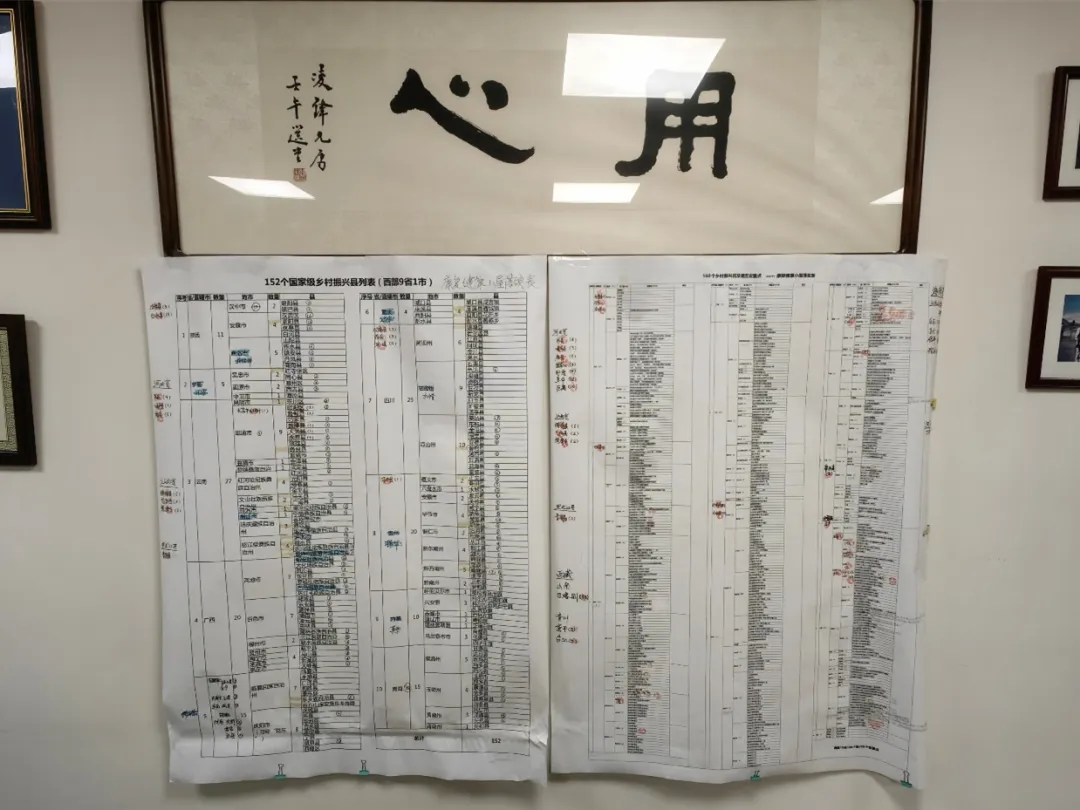
A map of the country showing the locations of health huts that have been established and are yet to be established in Professor Ling Feng's office
Luzhou was the first stop of the Red Army's entry into Sichuan, and also the main battlefield of the Red Army's Four Crossing of the Chishui Campaign. The Red Army crossed the Chishui River four times and entered Gulin three times. Many people from Gulin County threw themselves into the battlefield without hesitation, and there were also many young people from Gulin in the Chinese People's Volunteer Army who later went to fight in North Korea.
On May 22, the director of the local health center reported Yang Yang's illness and difficult family situation to Professor Ling Xiang. Professor Ling and Professor Huang Changren and the other free clinic experts set off immediately to visit the family and discovered that the situation was even more serious than expected.
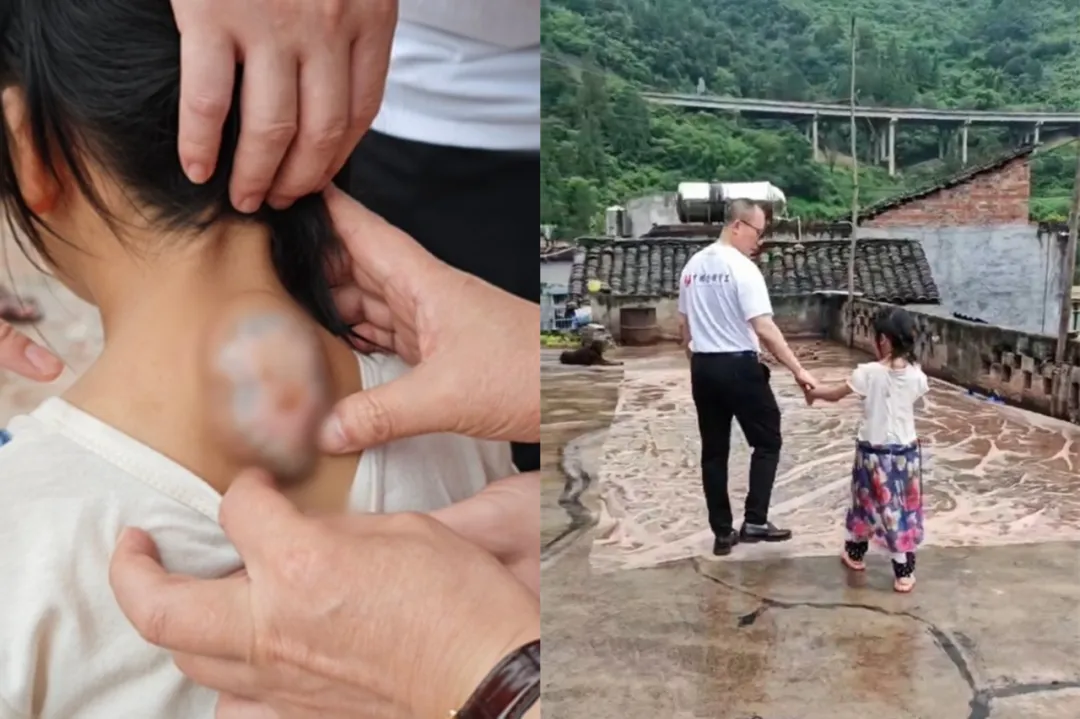
Pictures from the consultation (left) and the home visit by the volunteer doctors (right)
The operation seemed simple, but its complexity lay in: would the protruding spinal cord and nerves still function? How could they be reinserted? During the operation, the nerves were pulledand it was feared that the child might become paralyzed. After removing such a large mass, how could the dural sac, bone defects, and skin defects be repaired? The child had had abscesses and pus oozing from the mass every year before, so what if the mass was cut open and was full of pus? It would be difficult for any repair material to grow back well. All of these difficulties lie in the fact that it can only be completed with the concerted efforts of a team with experts in all fields.
After discussion, with the support of the Beijing Lingfeng Foundation, Yang Yang was admitted to the Department of Neurosurgery of Xuanwu Hospital of Capital Medical University, the Chinese National Neuroscience Research Institute, where the team of spinal neurosurgeon Duan Wanru was responsible for the treatment.
The expert team worked together to formulate the surgical plan
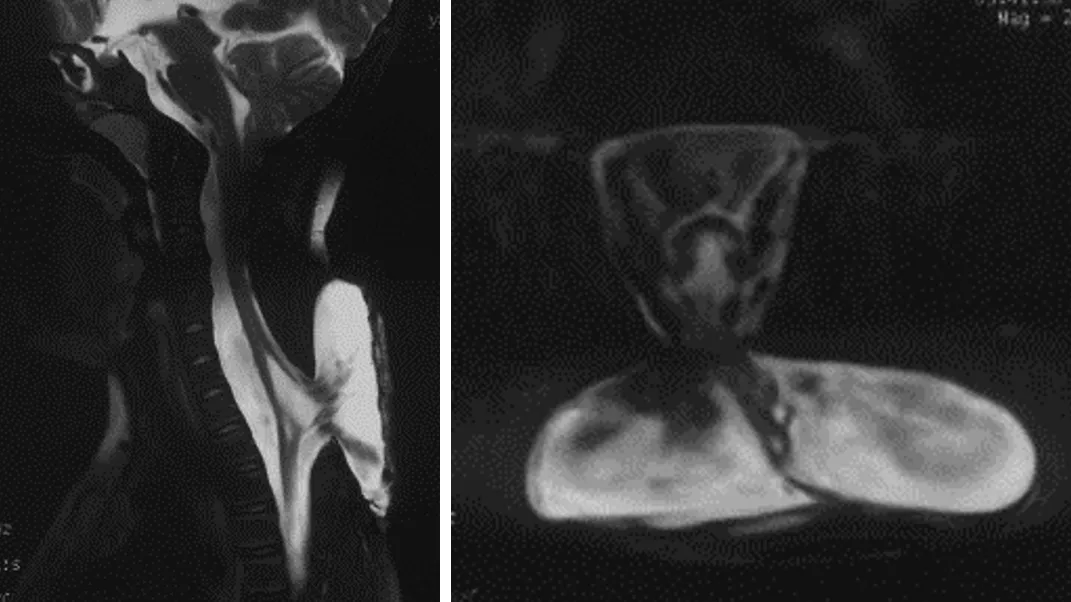
Preoperative MRI images show that the nerves have been pulled out of the spinal canal with the cystic hernia
After admission, Dr. Duan arranged a series of examinations and assessments for Yang Yang. Dr. Xing Tianying from the Department of Urology was invited to perform a detailed urodynamic examination to assess whether there was neurogenic lower urinary tract dysfunction. Technician Zhang Mo from the Department of Radiology completed a detailed imaging scan, which revealed the fine structure of the bulging spinal cord.
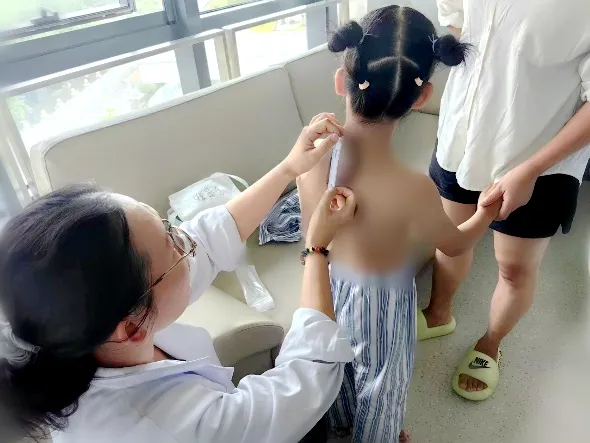
Dr. Li Xin from the Plastic Surgery Hospital of the Chinese Academy of Medical Sciences (hereinafter referred to as the Plastic Surgery Hospital) designed a plastic surgery plan for Yang Yang's skin.
Professor Ling Feng, Chen Zan,,the Director of the Spine Neurosurgery Center, and Wang Ning, the Director of Neurocritical Care, all provided valuable suggestions for the child's surgery. Li Xiaoyu, the Director of the Neurophysiology Center was in charge of monitoring the entire procedure.
The child had defects in the vertebral plates of multiple segments, and the spinal cord structure in the cervical-thoracic junction area within the vertebral canal had been pulled backwards and deformed, with the nerve tissue adhering to the inner wall of the cyst's top. This part of the structure is part of the central nervous system, and if it is damaged during surgical separation, it could cause the child to experience numbness or paralysis in the limbs, or even more serious problems. Another difficulty of the operation is that the pulled spinal cord is separated from the outside world by only a thin layer of keratinized skin tissue at the top of the cyst. The spinal cord needs to be returned to the vertebral canal, the water environment surrounding the spinal cord needs to be reconstructed, and the muscles, subcutaneous tissue and skin need to be covered again.
These types of diseases are not common in clinical practice. The traditional surgical plan is to completely free the herniated spinal cord from the inside of the cyst wall under intraoperative electrophysiological monitoring, and then cut fascia tissue from other parts of the body to construct the missing dura. After discussing with Professor Fengzeng Guan and Zanzhen Chen, Duan Wanru innovatively proposed a new plan, which is to free the spinal cord together with the attached connective tissue (“umbrella handle and mushroom umbrella”) as a whole from the inner wall of the sac, release the cerebrospinal fluid and return the spinal cord to its position, and then watertightly suture the edge of the free connective tissue to the edge of the normal dura mater.
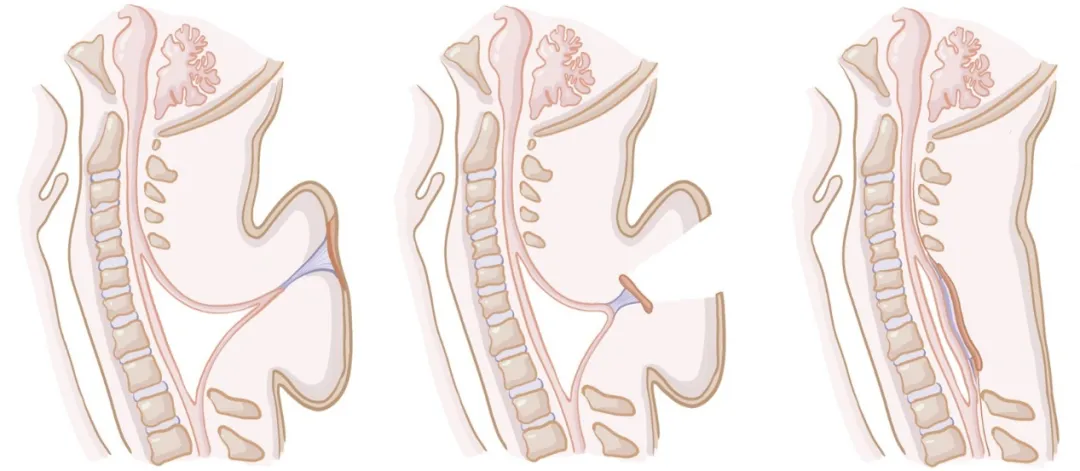 Dr. Wanru Duan's schematic diagram of the “umbrella-shaped double-layer fascia flap” designed to repair the spinal cord bulge leak (drawn by Dr. Penghao Liu of Xuanwu Neurosurgery)
Dr. Wanru Duan's schematic diagram of the “umbrella-shaped double-layer fascia flap” designed to repair the spinal cord bulge leak (drawn by Dr. Penghao Liu of Xuanwu Neurosurgery)
If this method is successfully implemented, it will reduce the possibility of nerve damage during the operation and also avoid making new incisions in other parts of the body. However, shaving the fascia to a thickness of a few millimeters from within the thin keratinized epidermis without damaging the central nervous tissue requires very delicate manipulation. The experts also discussed the surgical approach, intraoperative precautions and postoperative management in detail based on their experience. After determining the optimal plan, alternative plans and various wound closure plans, the countdown to the surgery officially began.
The operation was successful! The love continues

At 1 pm on July 16, the surgery officially began. Dr. Duan Wanru carefully incised the skin along the edge of the cyst, looking for the boundary between the connective tissue that had repeatedly become infected and the normal meninges. Suddenly, a jet of clear water came out, and there was no pus! The doctor on the table let out a sigh of relief: it could be repaired in one stage! The cerebrospinal fluid was released and the cyst deflated, but the herniated nerve was still tightly attached to the skin of the cyst, like a loop of nerve that was stuck to the skin, and cutting it would affect nerve conduction. Dr. Duan skillfully made a circular separation around the adhesion of the nerve, separating the adherent connective tissue along with the nerve, just like a kite attached to a string, and then returned the string (nerve) to the spinal canal, and sutured the edges of the kite (connective tissue) to the defect in the dura water-tightly. Not only did she not break the nerve, she also used this hard connective tissue to repair the dura, killing two birds with one stone!
The operation went very smoothly. With the concerted efforts of the surgical team, anesthesiologist, electrophysiological monitoring physician, and operating room nursing team, Dr. Duan Wanru carefully and completely stripped away the spinal cord and its adherent connective tissue from the bulging vertebral canal, returned the bulging spinal cord, and then sealed the dura water-tightly; and used the tough fibrous tissue remaining in situ to reinforce the area.

Postoperative wound tension-relieving suture
In cooperation with Dr. Li Xin and Dr. Tian Jia from the Plastic Surgery Hospital, layered decompression was performed using the optimal in-situ tension-relieving method. To prevent subsequent scar contracture, plastic surgery's Z-plasty was deliberately adopted, and the skin was successfully sutured. The anesthesia and recovery process also went very smoothly. The entire surgery lasted 5 hours.
The moment they left the operating room, Yang Yang's parents let go of the ten years of worry in their hearts.
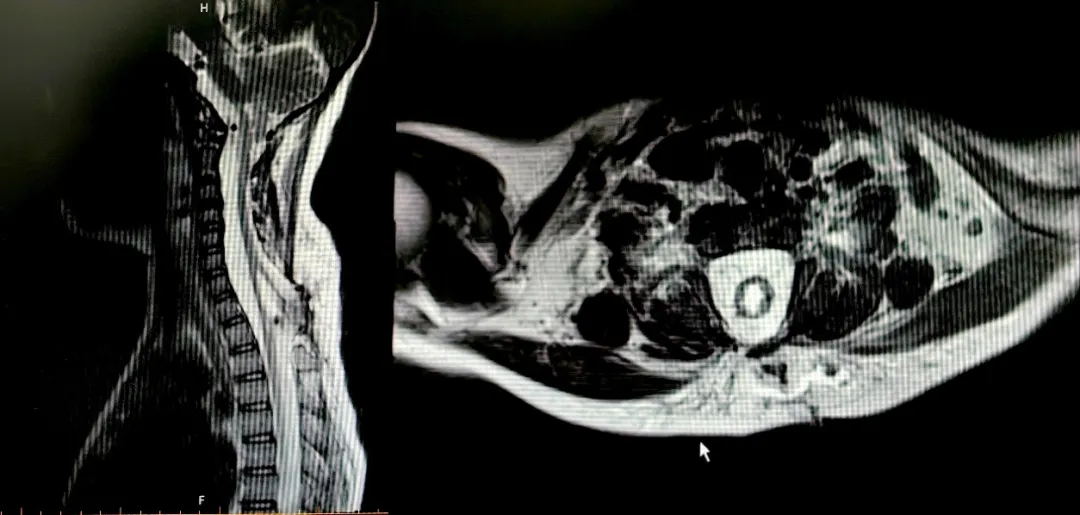
A postoperative review of Yang Yang's cervical spine MRI showed complete reabsorption of the spinal cord, and the surgical results were satisfactory
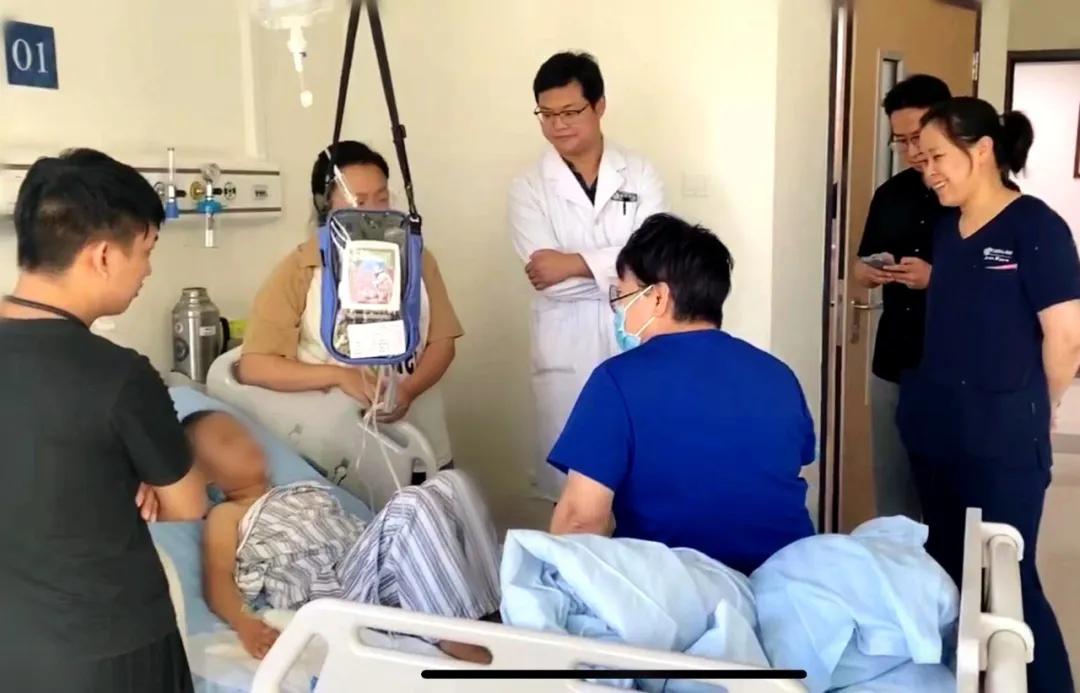
Professor Ling Feng visited Yang Yang's bedside to check on his condition and arrange a follow-up treatment plan



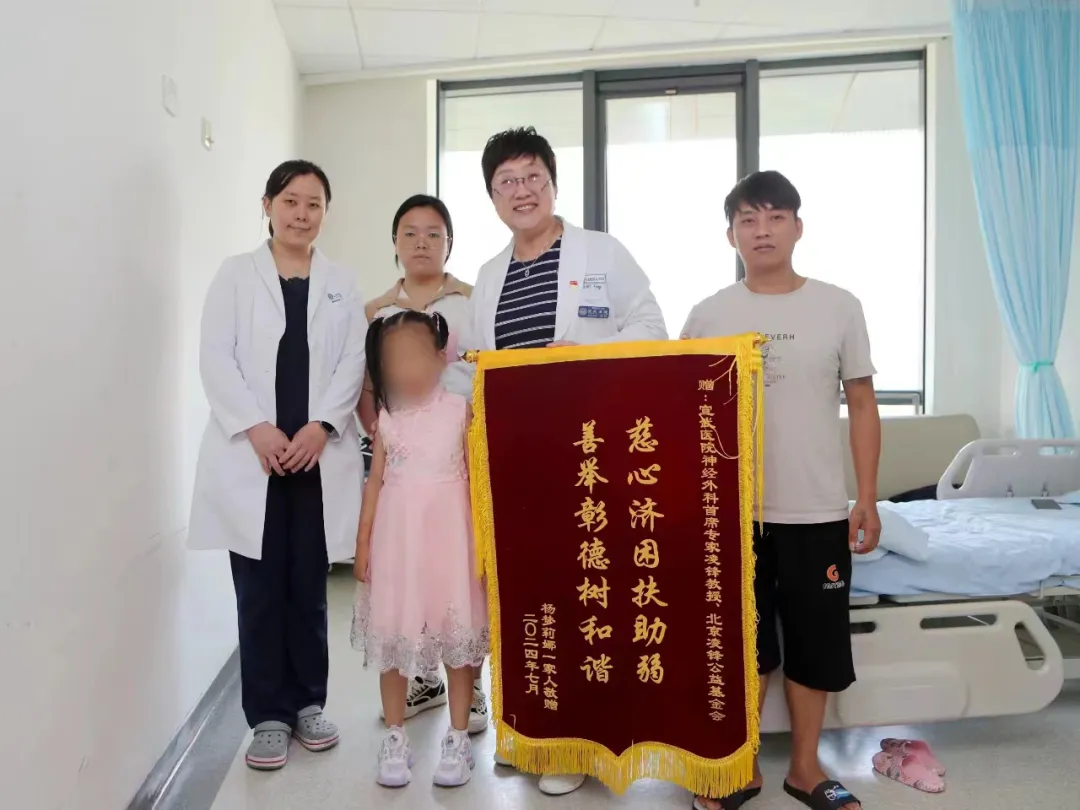
On the day of discharge, Yang Yang put on a new pink dress. Seeing Yang Yang, who had been relieved of her “burden” and was now light as a feather, her parents, Professor Ling Feng, and the team of doctors led by Dr. Duan Wanru finally beamed with satisfaction and relief.
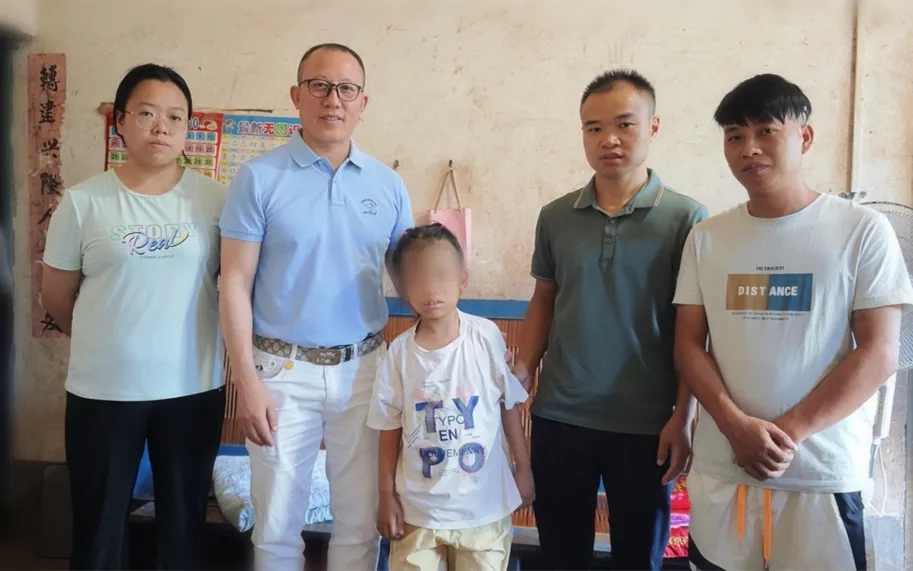
Volunteer doctor Huang Changren (second from left), an expert from the Affiliated Hospital of Southwest Medical University, followed up with Yang Yang's home
Any use of this site constitutes your agreement to the Terms and Conditions and Privacy Policy linked below.
A single copy of these materials may be reprinted for noncommercial personal use only. "China-INI," "chinaini.org" are trademarks of China International Neuroscience Institute.
© 2008-2021 China International Neuroscience Institute (China-INI). All rights reserved.